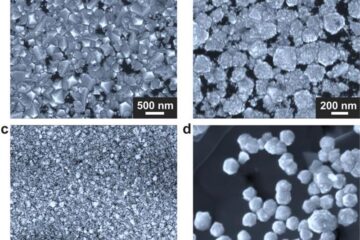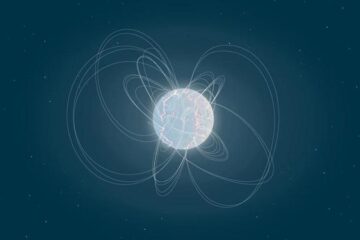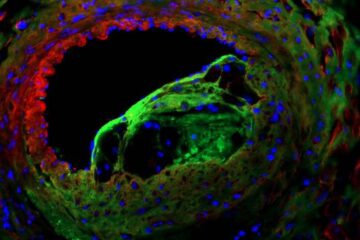’Supersolid’ or melted ’superfluid’ film: A quantum difference

New calculations support an alternative to “superfluidity” of a solid as the explanation for the behavior of an isotope of helium, 4He, at temperatures approaching Absolute Zero, according to a report in Physical Review Letters.
Among the most provocative recent reports in condensed materials science were studies interpreting the behavior of solid 4He in an oscillating chamber as a “supersolid.” In this current paper, John S. Wettlaufer, professor of geophysics andphysics at Yale University, and his colleague J. G. Dash, emeritus professor of physics at University of Washington, offer another possible explanation.
“If you rotate a container of nearly-frozen liquid 4He, even gently, it does unusual things — hydrodynamically,” said Wettlaufer. Superfluidity has long been shown to occur as liquid 4He is cooled to within two degrees of Absolute Zero. In this state, the liquid can flow without any resistance; rotating in a container it can continue without slowing, as long as it is kept at the low temperature. The state is an effect of quantum physics known as Bose-Einstein condensation (BEC).
The possibility of BEC in solid 4He was a theoretical speculation for many years, so the reports of Professor Moses Chan and his student E.-S. Kim at Penn State seemed to be the hoped for experimental validation.
However, Wettlaufer and Dash explain the observations differently. Their calculations show that even at temperatures below the freezing point of 4He, the boundary between solid 4He and the container is not frozen. They say that, instead, there is a thin lubricating superfluid film between the solid and its container.
The film is caused by melting at the boundary of the two solids, an effect that occurs in all solids. In ice, for example, interface melting influences the flow of glaciers, and causes frost heave in frozen ground.
Although the alternative explanation rejects the supersolid, it suggests a new and challenging study of superfluidity in a region of pressure and temperature that has not been accessible otherwise.
Related work in Wettlaufer’s group on thermodynamic and surface effects focuses on glycoproteins found in the blood of organisms that live at temperatures where most living things would be frozen. This research was supported by the National Science Foundation, the Bosack and Kruger Foundation and Yale University.
Media Contact
More Information:
http://www.yale.eduAll latest news from the category: Physics and Astronomy
This area deals with the fundamental laws and building blocks of nature and how they interact, the properties and the behavior of matter, and research into space and time and their structures.
innovations-report provides in-depth reports and articles on subjects such as astrophysics, laser technologies, nuclear, quantum, particle and solid-state physics, nanotechnologies, planetary research and findings (Mars, Venus) and developments related to the Hubble Telescope.
Newest articles

Making diamonds at ambient pressure
Scientists develop novel liquid metal alloy system to synthesize diamond under moderate conditions. Did you know that 99% of synthetic diamonds are currently produced using high-pressure and high-temperature (HPHT) methods?[2]…

Eruption of mega-magnetic star lights up nearby galaxy
Thanks to ESA satellites, an international team including UNIGE researchers has detected a giant eruption coming from a magnetar, an extremely magnetic neutron star. While ESA’s satellite INTEGRAL was observing…

Solving the riddle of the sphingolipids in coronary artery disease
Weill Cornell Medicine investigators have uncovered a way to unleash in blood vessels the protective effects of a type of fat-related molecule known as a sphingolipid, suggesting a promising new…





















